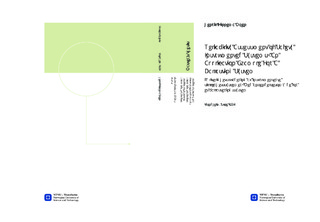| dc.description.abstract | Ballast systems perform important safety functions on ships and floating facilities, and failure to ballast properly may lead to a major accident, involving multiple fatalities, release to environment and loss of vessel. Assessments are therefore needed to verify that the systems are sufficiently safe and reliable. The main objective of the thesis is to suggest a reliability assessment approach for ballast systems, including recommendations to how reliability requirements should be set for this type of system. A combination of literature surveys provide the background for the reliability assessment approach. Previous work related to reliability of ballast systems is presented, followed by a presentation of the main regulations related to the systems. The third literature survey document the reported safety and reliability challenges, incidents and accidents related to ballast systems. As a basis for the detailed reliability assessment approach a typical ballast system on a ship shaped vessel is presented. The safety critical functions of the system are identified and the system is analyzed with regards to its role as a safety barrier system. The ballast system is subsequently classified as a safety instrumented system capable of protecting the vessel from hazards that may lead to loss of stability and draft. A hazard analysis is used to assess the adequacy of the barrier system, and the result of the analysis show that there are multiple hazards that may lead to loss of stability and draft, and that although the frequency of occurence might be low, the associated consequences can be very high. A comparison between different methods for assigning reliability performance requirements to ballast system functions is presented, based on two different approaches recommended by the international IEC61508 standard and the Norwegian OLF-070 guideline, respectively. A recommendation is made to assign minimum reliability performance requirements to the ballast system functions, based on the approach presented in the guideline. A proposed set of reliability performance requirements are presented. Potential failure causes and failure modes that may influence the reliability performance of ballast system functions are identified through a safety barrier failure analysis. As part of the analysis a failure mode, effect and criticality analysis of the main components is conducted. The proposed reliability assessment approach is presented as a practical stepwise procedure to be used when quantifying the reliability performance of the safety functions performed by a ballast system. The approach is based on a reliability block diagram technique where potential common cause failures among the components can be included in the calculations. The approach is developed to give conservative estimates for the reliability performance, and may be used as part of a verification process of ballast system reliability, as decision support during the design phase of new systems or to quantify the effect of reliability enhancing efforts in the operational phase. In addition to the reliability assessment approach, a defence approach against common cause failures in ballast systems is presented. The defence approach focus on the efforts that can be made in the operational phase during maintentance and testing, to reduce the influence and reoccurence of common cause failures. Finally, the proposed reliability assessment approach is applied to the ballast system of the Petrojarl Foinaven floating production, storage and offloading vessel as a case example of the approach. The case example show that the proposed reliability performance requirements can be achieved by performing functional tests of the ballast system components at regular intervals, and that the stepwise procedure may also identify important improvement potentials for ballast systems. | nb_NO |

